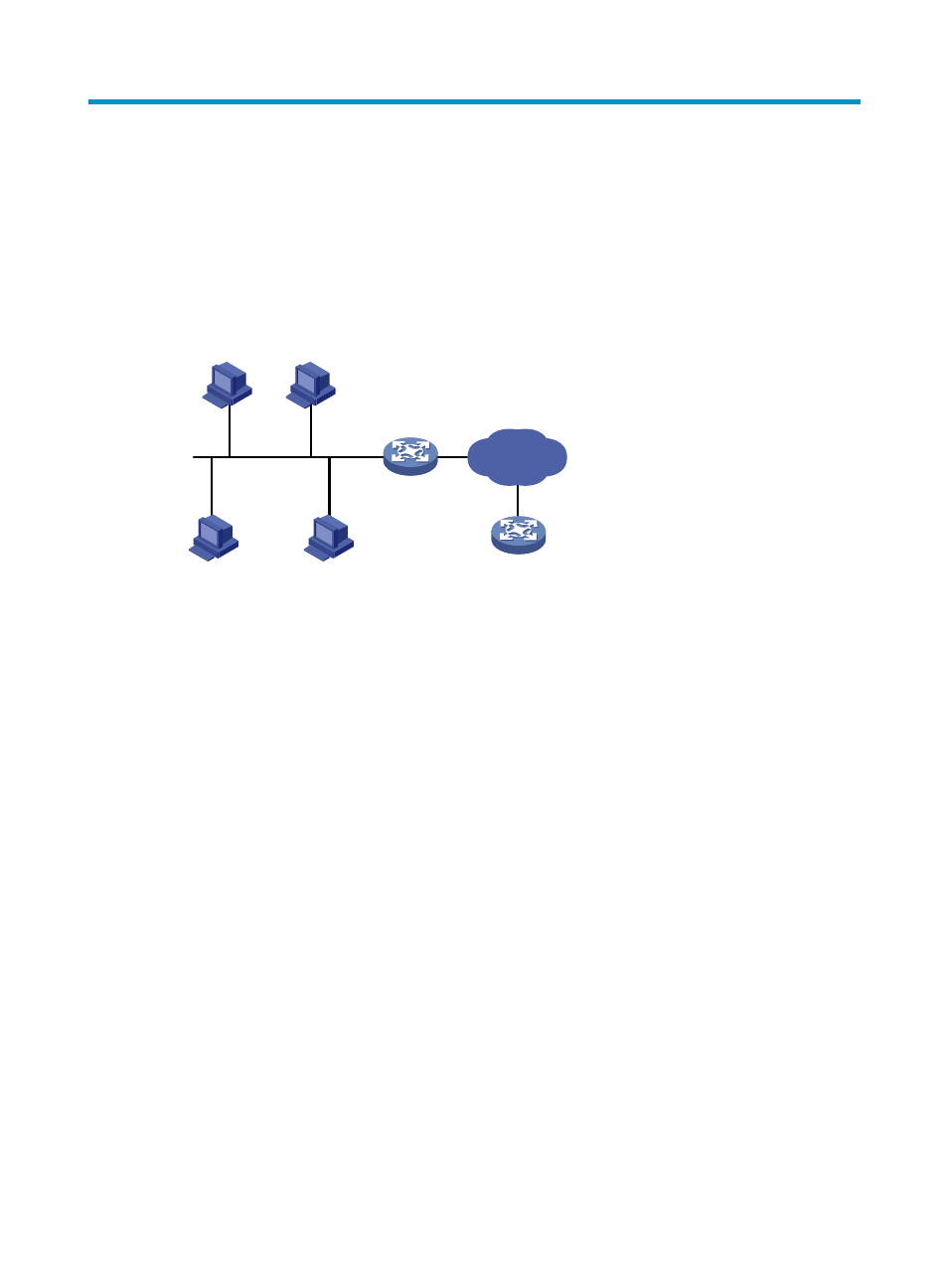Displaying and maintaining udp helper, Configuring the dhcpv6 relay agent – H3C Technologies H3C S12500 Series Switches User Manual
Page 158

145
18B
Configuring the DHCPv6 relay agent
A DHCPv6 client usually uses a multicast address to contact the DHCPv6 server on the local link to obtain
an IPv6 address and other configuration parameters. As shown in
794H
Figure 58
, if the DHCPv6 server
resides on another subnet, the DHCPv6 clients need a DHCPv6 relay agent to contact the server. The
relay agent feature avoids deploying a DHCP server on each subnet.
Figure 58 Typical DHCPv6 relay agent application
As shown in
795H
Figure 59
, a DHCPv6 client obtains an IPv6 address and other network configuration
parameters from a DHCPv6 server through a DHCPv6 relay agent in the following steps (rapid
assignment involving two messages):
•
The DHCPv6 client sends a Solicit message containing the Rapid Commit option to the multicast
address FF02::1:2 of all DHCPv6 servers and relay agents.
•
After receiving the Solicit message, the DHCPv6 relay agent encapsulates the message into the
Relay Message option of a Relay-forward message, and sends the message to the DHCPv6 server.
•
After obtaining the Solicit message from the Relay-forward message, the DHCPv6 server selects an
IPv6 address and other required parameters, adds them to a reply that is encapsulated within the
Relay Message option of a Relay-reply message, and sends the Relay-reply message to the DHCPv6
relay agent.
•
The DHCPv6 relay agent obtains the reply from the Relay-reply message and sends the reply to the
DHCPv6 client.
•
The DHCPv6 client uses the IPv6 address and other network parameters assigned by the DHCPv6
server to complete network configuration.
IPv6 network
DHCPv6 server
DHCPv6 relay agent
DHCPv6 client
DHCPv6 client
DHCPv6 client
DHCPv6 client